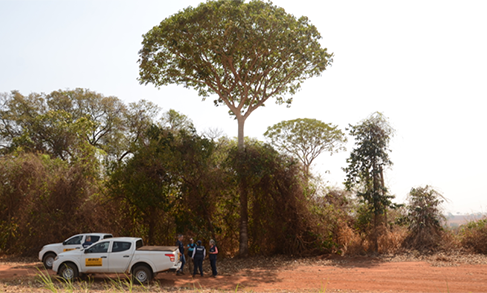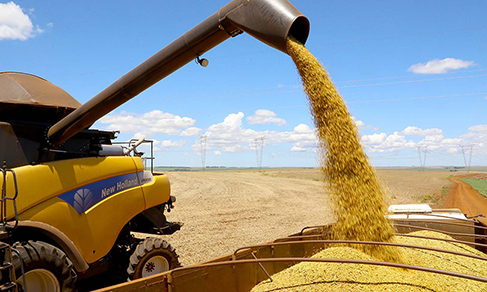Population Census
2022 Census: number of immigrants resumes growth for the first time since 1960
June 27, 2025 10h00 AM | Last Updated: July 03, 2025 09h35 AM
Highlights
- The number of residents born in foreign countries strongly grew between 2010 and 2022, changing from 592 thousand to 1.0 million people, which represented an increase of 70.3% in the period.
- This phenomenon reflects a change in the trend noticed in the previous decades, since the Brazil had been reducing the number of foreigners and denizens since the 1960 Census. It is the highest number since 1980, when the Census registered 1.1 million foreigners.
- The place of origin of these people has been changed as well. The population of foreigners and denizens born in Latin America jumped from 183 thousand in 2010 to 646 thousand in 2022, with a major influence of immigrants born in Venezuela (272 thousand), whereas the number of Europeans reduced from 263 thousand to 203 thousand in the same period.
- Among foreigners and denizens living in Brazil in 2022, 460 thousand immigrated until 2012, 151 thousand, between 2013 and 2017 and 399 thousand, between 2018 and 2022, confirming that the most recent flow is already responsible for most persons born abroad living in Brazil.
- In relation to the fixed-date migration, which investigates where the international immigrants lived five years before the census survey, the comparison between Censuses shows a significant increase in the international immigration flow, since it was of 268 thousand immigrants in the five-year period before the 2010 Census and of 457 thousand persons in the 2022 Census.
- The composition of the international migration flows to Brazil significantly changed, marked by the significant growth of the Venezuelan immigration, which jumped from 2 thousand individuals to 199 thousand, consolidating Venezuela as the main origin of immigrants in Brazil.
- Along the last decade, the proportion of immigrants coming from Latin America significantly grew, changing from 27.3% in 2010 to 72.0% in 2022.
- That increase occurs at the same time as the reduction in the share of flows coming from Europe (29.9% to 12.2%) and from North America (20.4% to 7.0%).
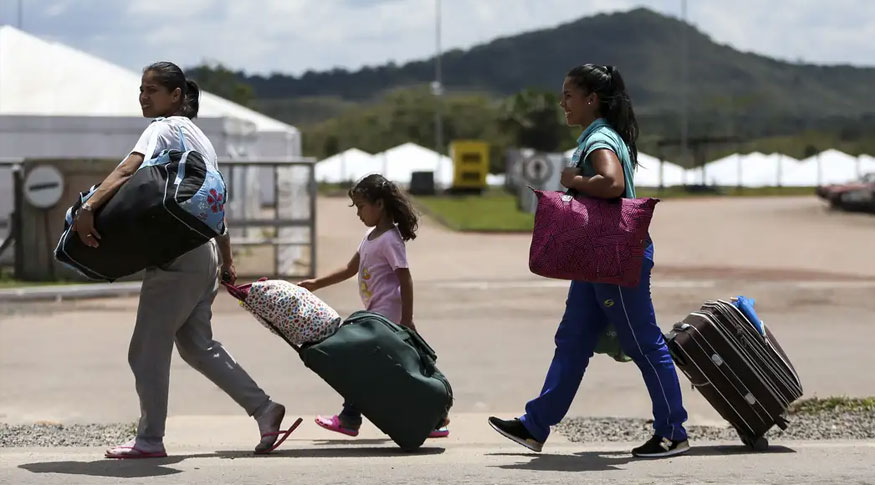
Data from the 2022 Population Census show a robust growth of natural residents of foreign countries in Brazil between 2010 and 2022, changing from 592 thousand to 1.0 million people, an increase of 70.3% in the period. This phenomenon reflects a change in the trend noticed in the previous decades, since the Brazil had been reducing the number of foreigners and denizens since the 1960 Census.
The place of origin of these people has been changed as well. The population of foreigners and denizens born in Latin America jumped from 183 thousand in 2010 to 646 thousand in 2022, with a major influence of immigrants born in Venezuela (272 thousand), whereas the number of Europeans reduced from 263 thousand to 203 thousand in the same period.
The Information is part of 2022 Population Census: Fertility and migration: Preliminary sample results, released today (27) by the IBGE. The release event will take place at the Auditorium of the Institute of Chemistry (IQ) of the University of Brasília (UnB), Darcy Ribeiro campus, and will be streamed through Digital IBGE and IBGE´s social media.
The results can be accessed on the IBGE portal and in platforms like SIDRA and Census Overview. In the last case, data can be viewed through interactive maps. Please take a look also on news on internal migration and fertility.
"In 2010, persons born in Portugal was the most numerous group in this segment of the population, replaced, in 2022, by those born in Venezuela, having the European country changed to the second position of foreign persons in Brazil. There was also an important increase in the number of persons from other Latin American countries and, on the other hand, a reduction in the number of those born in Europe in general," highlights Marcio Minamiguchi, IBGE manager of Population Estimates and Projections.
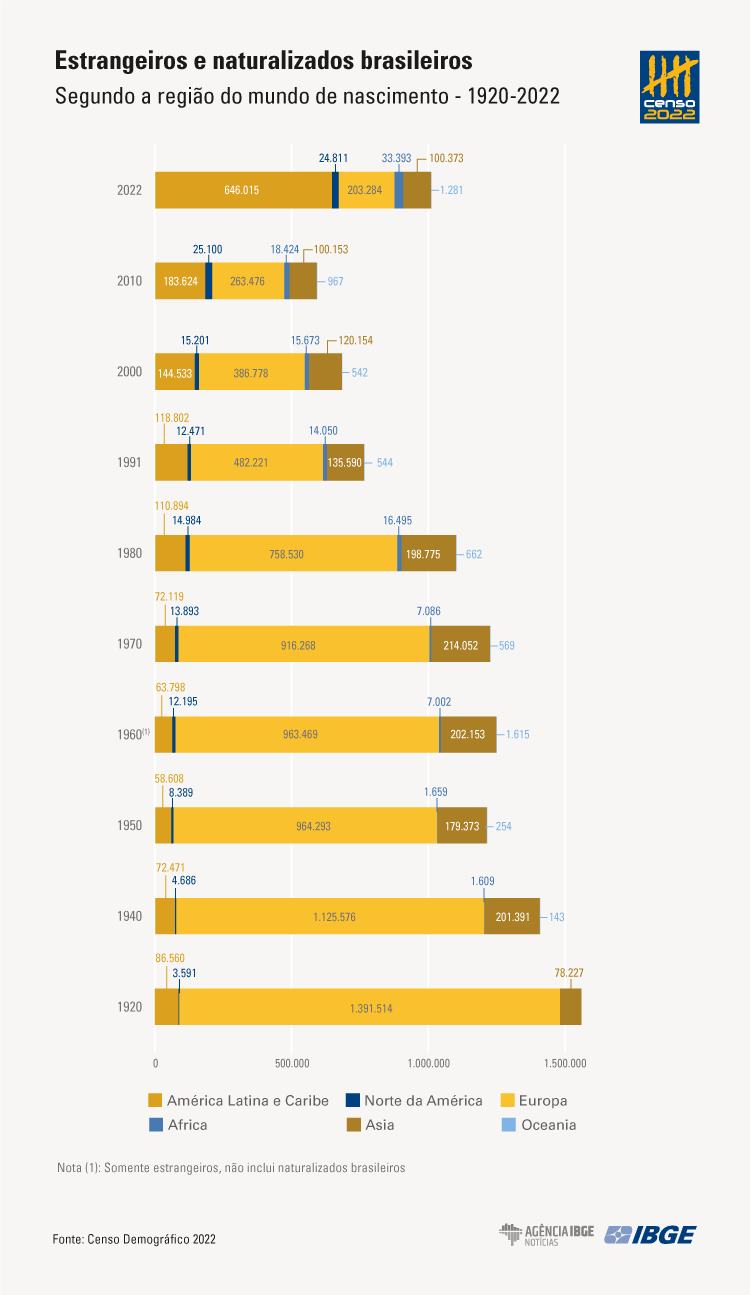
Another data that confirms a recent movement of immigrants is the analysis according to the year that they took up residence in Brazil. Among 1.0 million foreigners and denizens living in Brazil in 2022, 460 thousand immigrated up to 2012, 151 thousand, between 2013 and 2017 and 399 thousand, between 2018 and 2022, confirming that the most recent flow is already responsible for most persons born abroad living in Brazil.
Between Censuses, Venezuelan immigration jumps from 2 thousand to 198 thousand people
In relation to the fixed-date migration, which investigates where the international immigrants lived five years before the census survey, the comparison between Censuses shows a significant increase in the international immigration flow, since it was of 268 thousand immigrants in the five-year period before the 2010 Census and of 457 thousand persons in the 2022 Census.
A significant change has been noticed in the composition of international migration flows to Brazil, marked by a significant growth of the Venezuelan immigration, which jumped from 2 thousand individuals to 199 thousand in the five-year period before the 2010 and 2022 Censuses, respectively, consolidating Venezuela as the main origin of immigrants in Brazil.
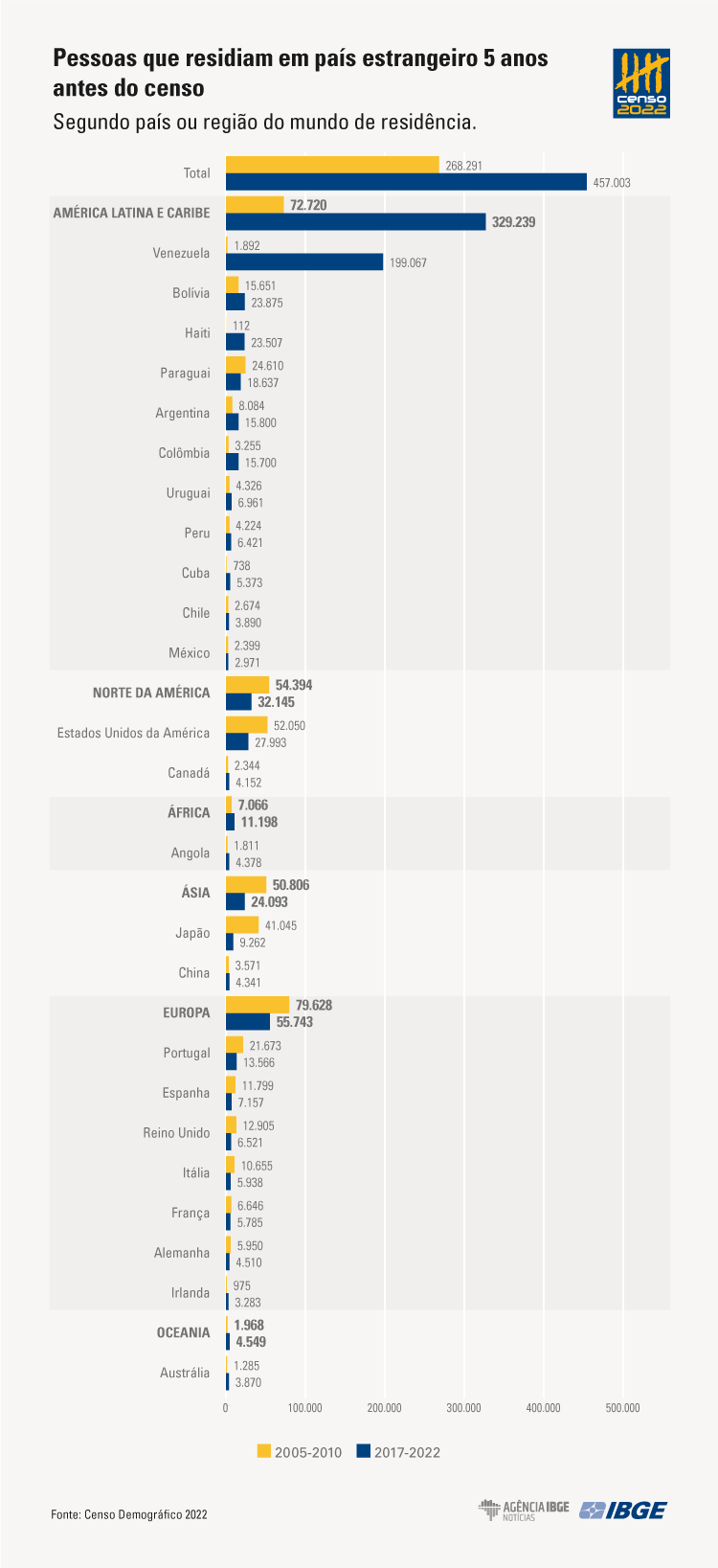
Along the last decade, an intense growth of immigrants coming from Latin America has been noticed, which changed from 27.3% in 2010 to 72.0% in 2022.
"Although the growth of that region has been boosted by the immigration from Venezuela, other countries like Bolivia, Haiti, Paraguay, Argentina and Colombia also stood out as important countries of origin of international migration flows in Brazil," analyzes Minamiguchi.
That increase occurs at the same time as the reduction in the share of flows coming from Europe (29.9% to 12.2%) and from North America (20.4% to 7.0%).
The manager explains that those contingents show a significant retraction both in relative and absolute terms, and highlights that the flows coming from the Global North are characterized by the return of Brazilians who lived abroad, unlike Southern countries, whose majority is of foreigners.
"As the United States of America, Japan and Europe together accounted for most flows in the 2010 Census, and they are localities in which the migrating profile is of Brazilian returning home, the international migration flows did not offset the effect of the mortality of generations of foreigners who immigrated to Brazil in the past. In 2022, we noticed the reverse of that historical trend, which was registered since the 1960 Census," completes him.
More about the survey
The survey deepens the characterization of the Brazilian population through information collected in the block of questions relative to themes Fertility and Migration of the Sample Questionnaire of the 2022 Population Census.
The date on Fertility is disaggregated by color or race, schooling level, age group e religion of women for Brazil and Federation Units. The data on Migration are detailed by places of birth, previous residence and residence length in the municipality, as well as information on international immigration for geographies Brazil, Major Regions, Federation Units and Municipalities.


